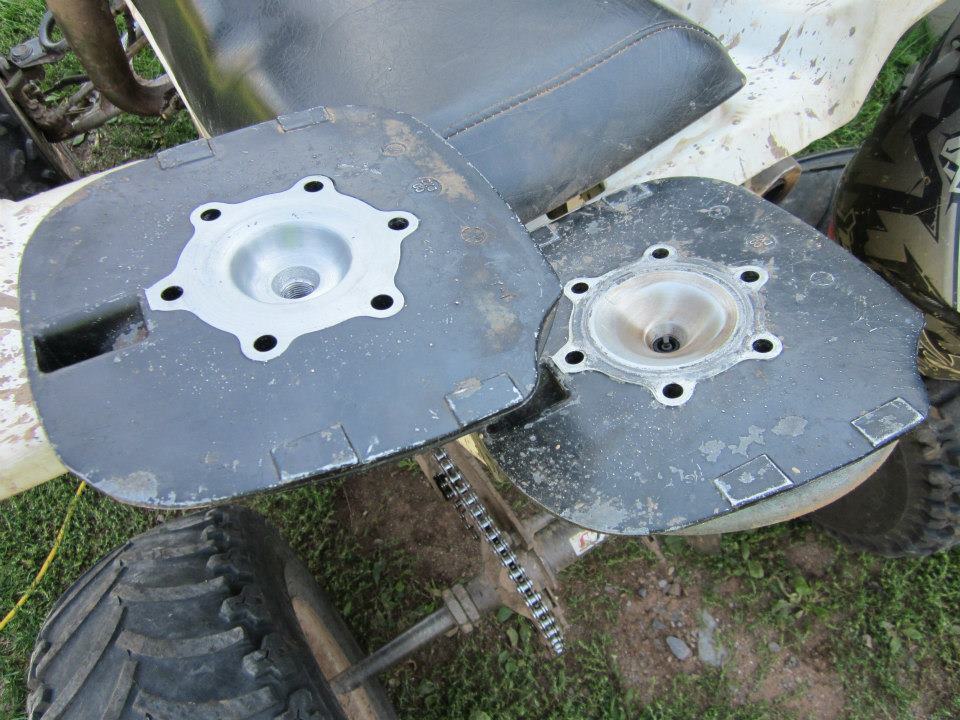Ok Im getting this slowly. Basically the say desired 50% squish is achieved by cutting the 11deg angle deeper into the head until you reach 45% of your bore size by measuring between the squish band or across the combustion chamber.
You say something about a 1mm radius. Is this the radius down on the spark plug floor to combustion chambers walls? Or is this radius from the top of the combustion chamber walls to the squish band?
No, no, no. The % of squish is totally about area. I suggest you stick with 50% unless you want to experiment.
Find the area of the bore, remove the % of squish area gives you the combustion area.
Now calculate the diameter of the combustion area. This is the diameter of the inside of the 11 degree squish surface.
This edge (of the 11 degree band) should have the (aprox) 1mm radius.
Now you saw my picture of the KTM head? It did have angled sides and only 1mm radius on the spark plug floor.
This was just to show there are options. No perfect "one answer fits all". This is a 10,000rpm head however.
You also say to achieve the desired cc volume that I can make the walls of the combustion chamber angled? Joe told me that a toroidal head has parallel walls perpendicular to the spark plug floor. But your saying its okay to cut them angled? Did you see my first head I cut on this thread.... it was done that way?
Parallel sides favour low and mid range torque. Angled favours higher rpm.
True toroidal looks like a donut mold and favours low rpm. Used in diesels and outboards. 1000-3000rpm stuff.
That KTM head I pictured favours over 10,000 rpm. Not what you want. It was just an example.
Your head shapes are just fine. Try them and feel how they work. Try to cut heads of the same cc and what the shape does.
This last head I cut came in around 24-26cc's. What effect will this have vs a head that was say 18cc's? Is the smalled cc's aimed at getting higher compression? Again this head was for my +3 stroker build so thats why I have a larger amount of cc's but I thin I could cut another one using the methods you described above to change the area.
This is like prescribing medicine by mail. Too many factors involved to quote an exact number.
Basegasket height, exhaust port height, bore and stroke, piston height, etc.
With a 50% squish chamber and 1mm squish gap the engine will work well and be safe with 22-28cc's.
Power does not drop off that bad as you go larger, but the danger of detonation increases rapidly as you go smaller.
My son Neil is running 23cc's at the moment I believe, stock basegasket, 1mm higher exhaust.
Goes like hades, no sign of detonation.
This is the volume to the gasket surface. A stoker will be considerably different, depending on how you space the cylinder.
What head design program are you referring to?
There are several, I don't know which SiCivicDude is referring to but Gordon Blair has the formula in his books that are widely available on line if you do a google search. Here is a web page program that will calculate Maximum Squish Velocity for you:
TorqSoft - Squish Velocity - Calculation Tool
The whole idea is to apply enough energy to get a quick burn, but not so much as to suck power from the crank or pre-ignite the mixture.
Steve

